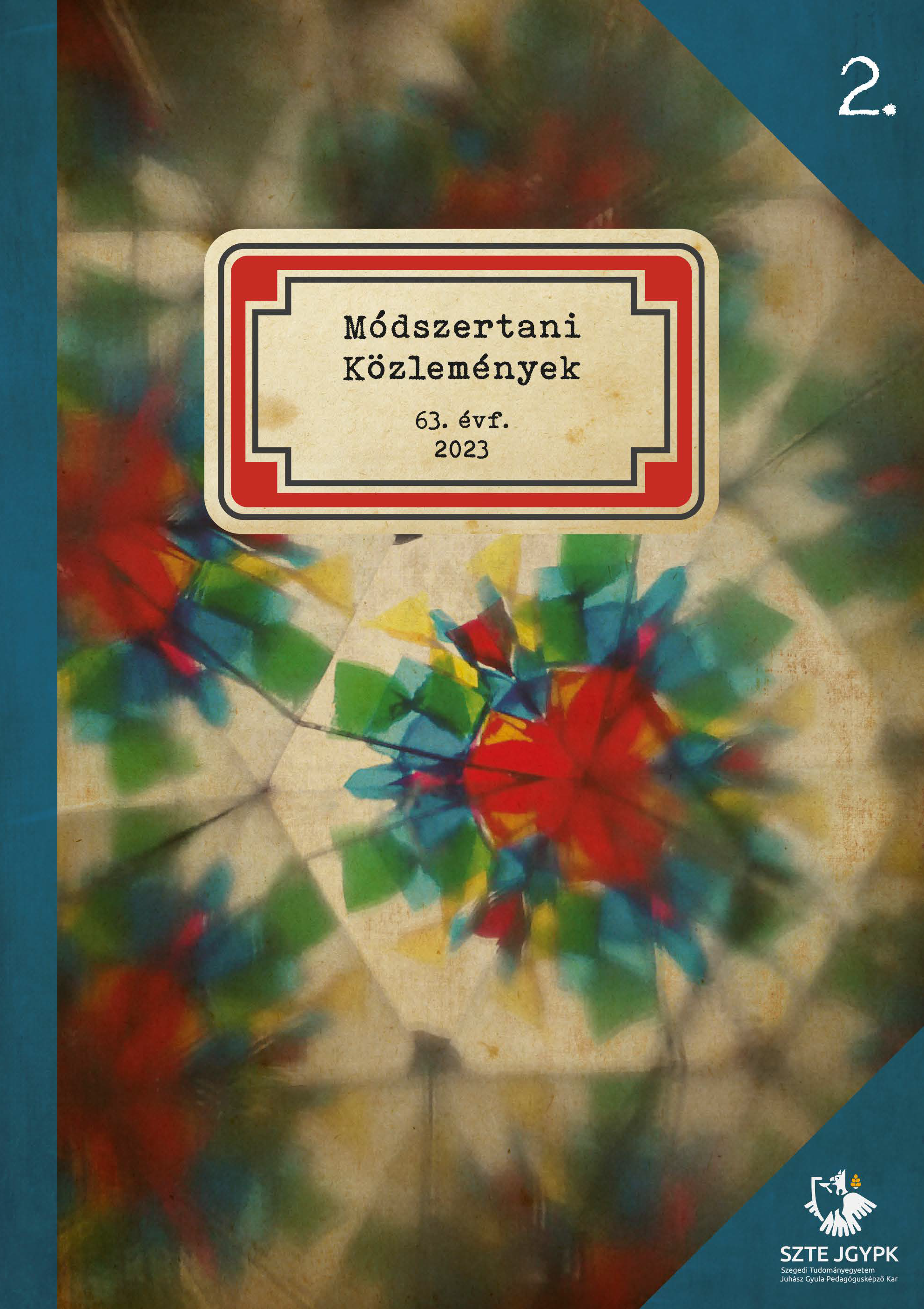Benefits of Tube Phonation in Speech Thearapy
Main Article Content
Abstract
Semi-occluded vocal tract exercises have a long history in Europe and include tube phonation (Guzman, 2017). In tube phonation, the sound is vocalized into a tube. The free end of the tube can be submerged in water or held in the air. In Hungary, tube-phonating techniques are not yet widespread. Perhaps this is both a reason and a consequence of the fact that there is only a very limited amount of literature on the subject in Hungarian. This work is an attempt to fill this gap. At the beginning of the paper, the theoretical knowledge that is essential for understanding the mechanism of action of tube phonation is presented, followed by an introduction to the operation, effects, uses and necessity of the tube phonation technique.
Article Details
References
Andrade, A. P., Wistbacka, G., Larsson, H., Södersten, M., Hammarberg, B., Simberg, S., Švec, J. G. és Granqvist, S. (2016): The flow and pressure relationships in different tubes commonly used for semioccluded vocal tract exercises. Journal of Voice, 30. 1. sz. 36–41.
Bajnócziné Szucsák Klára, Bihari Adél, Kiss B. Ilona, Szentkúti Gabriella és Tamás László (2016): A csőfonáció, mint hangterápiás módszer, és alkalmazása során nyert rövidtávú eredmények bemutatása. Magyar Fonetikai Foniátriai és Logopédiai Társaság Kongresszusa, Budapest.
Balázs Boglárka (2009): Diszfónia, a beszéd betegsége. Fejlesztő Pedagógia, 20. 2. sz. 20−22. Balázs Boglárka és Bóna Judit (2016): Életkori sajátosságok a beszédképzésben és a beszédfeldolgozásban. In: Bóna Judit: Fonetikai olvasókönyv. ELTE Fonetikai Tanszék, Budapest. 7−18.
Enflo, L., Sundberg, J., Romedahl, C. és McAlister, A. (2013): Effects on vocal fold collision and phonation threshold pressure of resonance tube phonation with tube end in water. Journal of Speech, Language and Hearing Research, 56. sz. 1530−1538.
Fischer Sándor (1969): A beszéd művészete. Gondolat Kiadó, Budapest. Frint Tibor (1982): A hangképzés zavarai. In: Frint Tibor és Surján László (szerk.): A hangképzés és zavarai, beszédzavarok. Medicina Könyvkiadó, Budapest. 117−155.
Gósy Mária (2004): Fonetika, a beszéd tudománya. Osiris Kiadó, Budapest. Granquist, S., Simberg, S., Hertegard, S., Holmqvist, S., Larsson, H.,
Lindestad, P., Södersten, M. és Hammarberg, B. (2015): Resonance tube phonation in water: High-speed imaging, electroglottographic and oral pressure observations of vocal fold vibrations − a pilot study. Logopedics Phoniatrics Vocology, 40. 3. sz. 113−121.
Guzman, M. (2017): Semioccluded Vocal Tract Exercises − A physiologic approach for voice training and therapy. University of Tampere. Academic Dissertation.
Tampere. Hacki Tamás (2013): A beszéd- és énekhangképzés fiziológiája, akusztikája, patológiája és terápiája. In: Hirschberg Jenő, Hacki Tamás és Mészáros Krisztina: Foniátria és társtudományok I. A hangképzés, a beszéd és a nyelv, a hallás és a nyelés élettana, kórtana, diagnosztikája és terápiája. ELTE Eötvös Kiadó, Budapest. 85−258.
Kassai Ilona (2005): Fonetika. Nemzeti Tankönyvkiadó, Budapest. Kelemen Márta (2018): A beszédtechnika helye a Magyar nyelv gimnáziumi oktatásában. Szakdolgozat. Pécsi Tudományegyetem Bölcsészettudományi Kar Nyelvtudományi Tanszék, Pécs.
Laukkanen, A. M., Pulakka, H., Alku, P., Vilkman, E., Hertegård, S., Lindestad, P. A., Larsson, H., Granqvist, S. (2007): High-speed registration of phonation-related glottal area variation during artificial lengthening of the vocal tract. Logoped Phoniatr Vocol. 32. 4. sz. 157−64.
Shivo, M. (2017): History of the LAX VOX®-tube exercise. QUICK First-Aid and Vocal Self Care. AP Lambert Academic Publishing, Mauritius.
Shivo, M. és Denizoglu, I. (2014): Lax Vox Voice therapy Technique. https://www.laxvox.com/ technique/ (2023.02.26.)
Shivo, M. és Denizoglu, I. (2019): doktorVOX R&D in Vocology. https://www.doctorvox.com/ what-is-doctorvox/ (2023.02.26.)
Simberg, S. és Laine, A. (2007): The resonance tube method in voice therapy: Description and practical implementations. Logopedics Phoniatrics Vocology, 32. 4. sz. 165−170.
Titze, I. R. (2006): Voice Training and Therapy With a Semi-Occluded Vocal Tract: Rationale and Scientific Underpinnings. Journal of Speech Language and Hearing Research, 5. 448−459.

